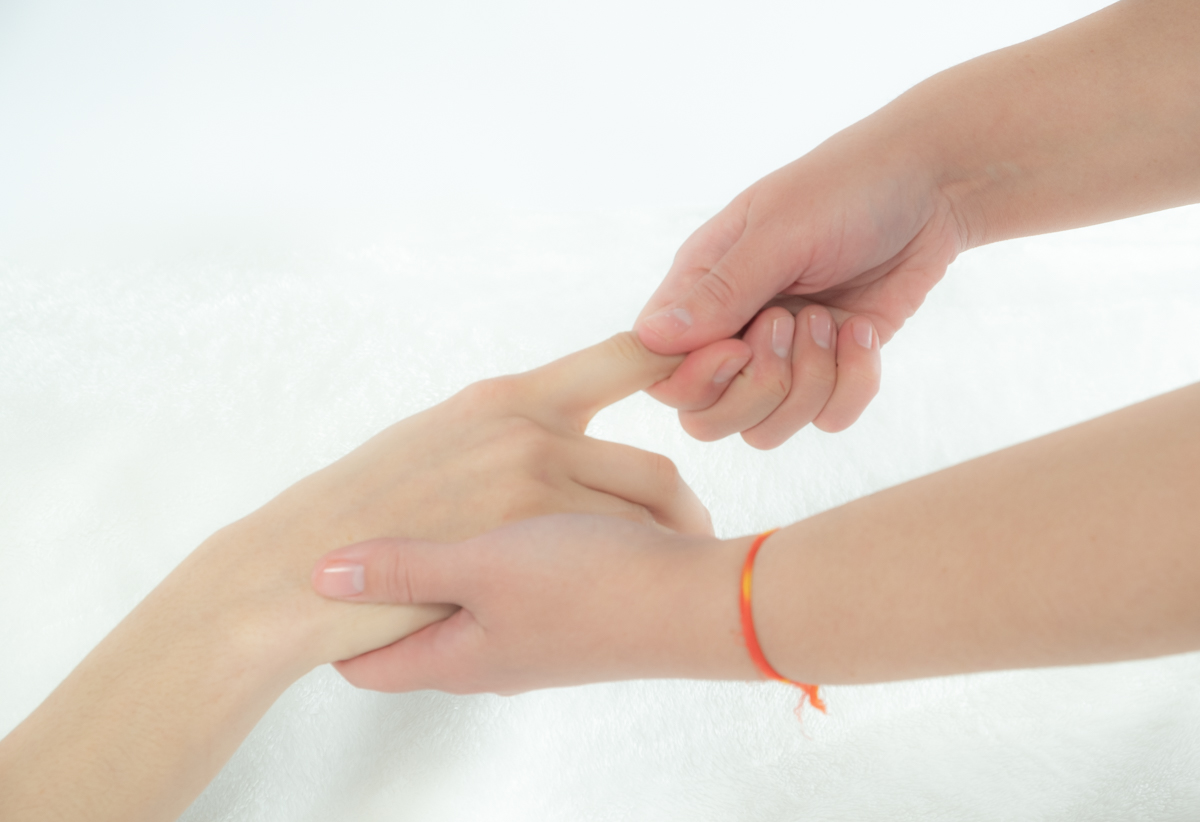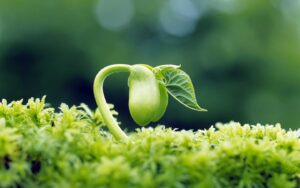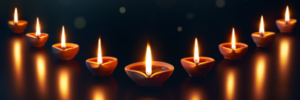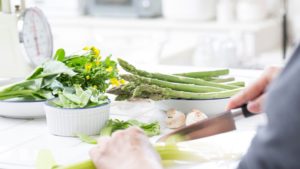In Ayurveda, there are daily self-care rituals, called dinacharyas. These rituals help us reconnect with our true nature in a loving and caring way. One of my favorite rituals is an Ayurvedic massage, known as Abhyanga. Literally translated, Abhyanga means “to anoint the body with oil.” This anointing ritual is performed with a loving, gentle touch, known as snehana. Dr. Vasant Lad teaches that love is juicy, oily, soft and gentle. If you perform Abhyanga rituals with snehana in your touch, mind and heart, you will fall in love with yourself. This love is called Sneha.
Your abhyanga ritual can include massaging the entire body or just one area. Common variations to a full body abhyanga are Shiro-Abhyanga, a head massage and Pada-Abhyanga, a foot massage. Other parts of the body can be the focus of a massage, such as the abdomen and joints. Here, I’m gifting you my full body ritual.
Much like a well-oiled machine, regular Abhyanga rituals create a strong, vibrant and healthy body, mind and spirit. Here’s a short list of a few key benefits:
- Anti-Aging
- Improves Prana Flow
- Pacify Vata Dosha
- Protects Eyesight
- Provides Longevity
- Improves Sleep
- Strengthens the Body and Skin
Your body is precious. It is your vehicle of enlightenment. Treat it with care.
– Buddha
Performing your own Abhyanga Ritual
1. Create a sacred space in your home, body and mind.
Find a private place in your home to perform your ritual. Usually I choose the bathroom. While you prepare the spaces, begin warming your massage oil it in a warming dish or placing the closed bottle in a sink of warm water. You may also want to set down an old towel for the massage and have an old set of clothes to wear afterwards.
As you wait for the oil to warm, bring your state of mind to a peaceful and restful place. Sit or stand in a comfortable position. Close your eyes and place your hands on the lower abdomen, at and just below the belly button. Begin taking long, deep and smooth inhales into the lower abdomen, causing the hands to move outward. Exhale with the same long and smooth breaths, relaxing the abdomen. After a few breaths in this state of awareness, tune in to the state of the body. Are there are parts that need more attention? Do you have pain or feel healthy? Make note of the areas on which to focus during the ritual, bringing them love and awareness with each breath.
Make your mind a sacred space. Repeating the same breath, bring focus from the crown of the head on the inhale to the space below the nostrils on the upper lip during the exhale. Notice your state of mind. Are thoughts other than the ritual coming in and out? Continue focusing on the breath, use a mantra if you have one, express gratitude or count the length of the breath until the mind calms.
Once your home, body and mind are ready, slowly open your eyes. Bring your hands from the abdomen into prayer, placing your thumbs along your sternum. Slowly bow down towards your heart center, giving thanks and gratitude for the ritual that is about to start.
2. How to Perform the Abhyanga Ritual
Order: The direction of the Abhyanga is to work from the feet to the head, which helps draw the flow of Prana down and out of the body, clearing you for new, rejuvenating Prana to enter through the crown of your head. Move methodically up your body; feet, legs, waist, abdomen, chest, arms, shoulders, neck and head.
Technique: The simplest way to remember this is take long strokes along long bones/areas and circles around joints. Start with long strokes over your entire limb, for example to cover the entire arm or leg, Then, go back and repeat in smaller segments, (calves, thighs, etc) adding in the circular movements when you reach the joints. Each movement is generally repeated multiple times, deepening the effect. Repeat each movement in multiples of seven, e.g. seven, fourteen or twenty-one, based on personal preference and time available.
Pressure: The pressure should always be to your personal comfort, it should never hurt. As a starting point, start lighter and increase pressure when and where needed. Pressure is deeper on the downward direction and lighter on the upward direction, following the direction of Prana.
Speed: Slower is better, as it is grounding and calming. However, the speed can be mixed-up during a massage for specific areas, such as joints or stiff, congested areas.
Concluding: Conclude with a final series of gentle presses and holds across all the areas massaged, beginning at the top of the head to the feet. This transition signals to the body that the massage is complete.
3. Close with a shower or bath
After the oil is massaged into the skin, let it rest for 20 minutes. Stay warm by wearing old clothes until you shower or bath. During this time, the oils will continue to nourish your skin. At the same time, the oils help pull fat-soluble toxins out of the skin, binding with the oils. After 20 minutes, the skin will no longer take in more oil, leaving a film on the skin. This oil residue can become sticky, collect dirt and clog the pores. The bathing will act as a therapeutic steam treatment known as Swedana. Sweda means to sweat, which is one of the detoxification pathways. The steam from a shower or bath naturally opens the pores for additional detoxification and oil absorption.
Helpful Tidbits
Consider the Time of Day
The time of day can matter. Depending on the season and the imbalance being addressed, the time of day may change. According to ancient texts, Vata and Pitta pacification or seasons should perform Abhyanga in the late afternoon or evening. For Kapha pacification or season, the timing is best for mid-day. If more than one dosha is involved, focus on mid-day. For detoxification purposes, the morning hours are preferred. For most, Abhyanga rituals are easiest to schedule in the morning, before showering and going to work. And if this works, keep it that way. It is better than skipping the ritual. Set aside about 10 minutes and upwards to 30 minutes to perform your abhyanga ritual, plus the rest time.
Choosing Abhyanga Oils
There are literally 100’s of different Abhyanga oil formulas available to us to choose. Choosing one that is appealing to you and can address the ayurveda imbalances you may be experiencing. If you are experiencing dry, cold or feeling unsettled, look for VATA formulas. If you are experiencing heat, such as inflammation, redness, or heated emotions, look for PITTA formulas. If you are experiencing heaviness, lethargy, stiffness or immobility, look for KAPHA formulas.

Abhyanga Oil blends – Have a variety of oil blends available, possibly one for each dosha. Here are some of my favorite suppliers:
SVA/Chandika – An absolute favorite! Rich in herbs and aromas.
Banyan Botanicals – Everyday use Oils.
Kottakkal – Traditional Oil Formulas from India.
When to Avoid Abhyanga
It may seem that everyone can benefit from an Abhyanga ritual, but sometimes, there are important reasons to postpone. If you are experiencing obvious imbalances and do not yet understand the root, please consider a coaching session with me for guidance.
Ama, for example, is a category of toxins that are present in the body that can manifest from poor digestion. In this case, if ama is high, focus on rebuilding the digestive energy, stop taking in the toxins and rid the body of them through natural detoxification methods. Then, you can return to full rituals.
The following are additional reasons why Abhyanga may not be appropriate.
- Acute diseases. Avoid rituals when serious health threatening diseases, such as heart disease or diabetes, are actively being managed.
- Feeling under the weather. Full Abhyanga massage rituals are not recommended when an active cold, flu or fever are present.
- Skin diseases. If your skin has open wounds, inflammations or diseases, avoid allowing oil into these areas.
- Active days of menstruation. Prana is flowing downward and outward during these days. Avoid the full massage rituals during the days of flow, as the downward direction is too strong.
- Immediately following eating, sexual intercourse or a purgative. Prana during and just after these activities is very focused on supporting these functions. By performing an Abhyanga ritual immediately following, the energy of these functions is suppressed. Give at least 1-2 hours following these activities to perform the ritual.
- Pregnancy and post-delivery. Under all circumstances, consult with a medical or Ayurvedic professional before performing any Abhyanga rituals during or after pregnancy. During pregnancy, a full body Abhyanga is not advised. However, for example, a focused Abhyanga to the abdomen and hips may be fine. Also, certain herbs and oils should be avoided. Again, consult your clinician. After a natural delivery, rest three to four days before resuming any Ayurvedic rituals.
- While intoxicated or under influence of drugs. Enough said.
- Extreme obesity. If you are more than 50-75 pounds over ideal bodyweight.
I hope you will join me in adding this ancient Ayurvedic Ritual of Abhyanga into your daily self care practices.




